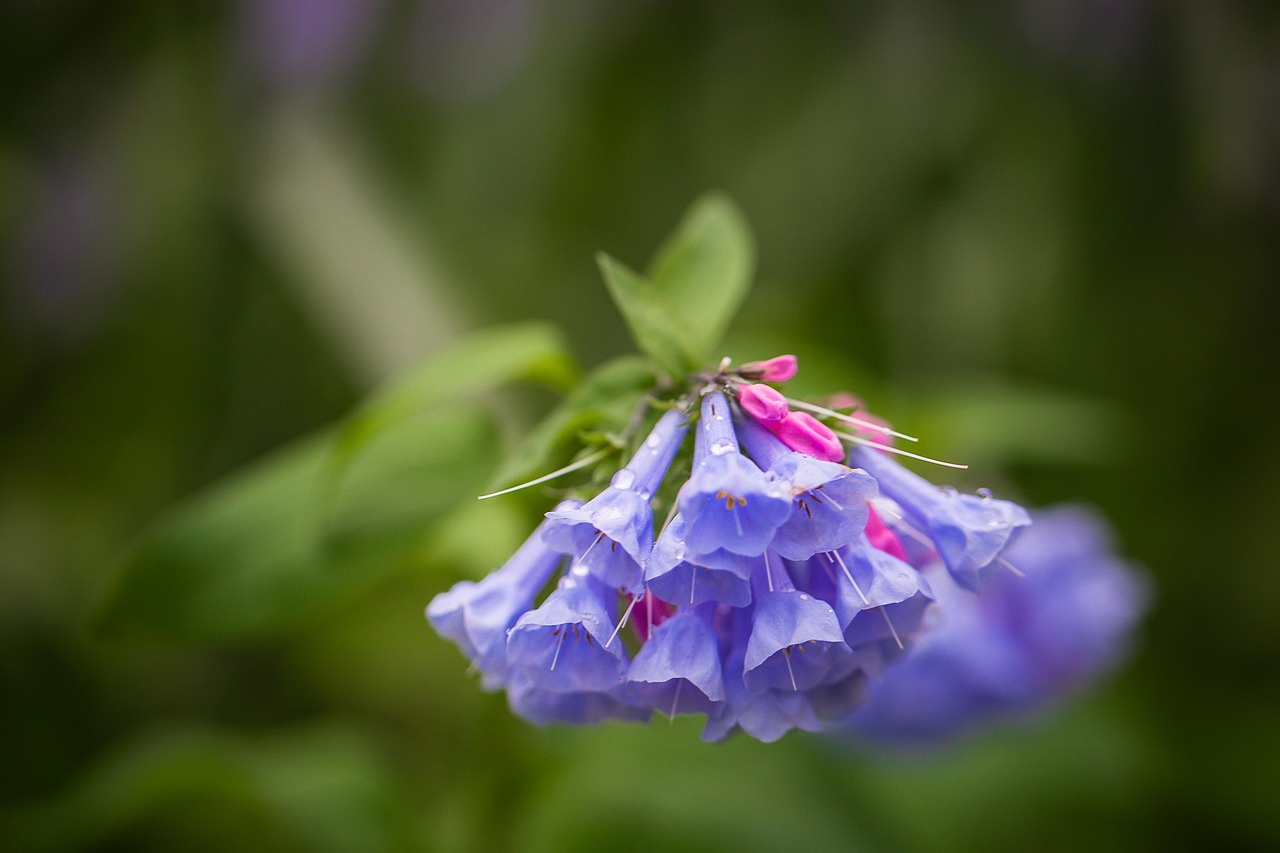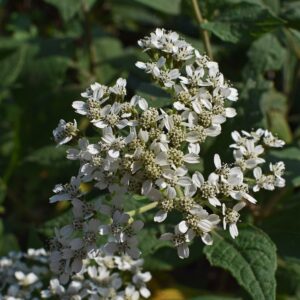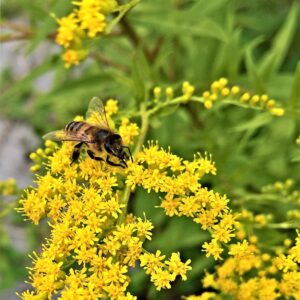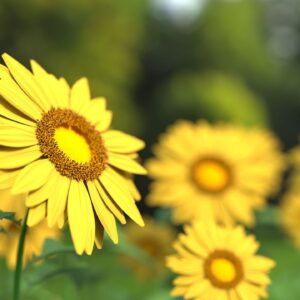Virginia Bluebells (Mertensia virginica) are native perennial wildflowers known for their striking blue, bell-shaped flowers and attractive foliage. They are particularly valued for their early spring bloom and their role in woodland gardens and naturalized landscapes. Overall, Virginia Bluebells are a beautiful and gentle addition to spring gardens, offering a burst of blue color and attracting pollinators, while thriving in shaded and woodland environments.
Appearance: Virginia Bluebells have a charming, bell-like flower structure that is both delicate and vibrant. The plant forms a lovely, low-growing clump with a gentle, natural appearance.
Height: Typically, Virginia Bluebells grow to about 1 to 1.5 feet (30 to 45 cm) in height, making them suitable for the front of garden beds or as ground cover.
Leaves: The leaves are broad, ovate, and smooth, with a slightly waxy texture. They are arranged alternately along the stems and are generally green, turning a bit yellow as they die back in the summer. The leaves can be up to 6 inches long.
Flowers: The flowers are small, tubular, and bell-shaped, usually in shades of blue ranging from pale to vibrant. They are arranged in loose clusters at the top of the stems. The flowers often start as pink buds before opening to their blue color.
Blooming Season: Virginia Bluebells bloom in early spring, typically from April to May, before many other plants have started their growing season. The flowers can last several weeks, providing early-season color.
Habitat: These plants prefer well-drained, moist soils and can thrive in partial to full shade. They are commonly found in rich, woodland areas, meadows, and along stream banks.
Wildlife: Virginia Bluebells are valuable for pollinators, particularly bees and butterflies, which are attracted to their nectar-rich blooms. The plant’s early bloom helps support pollinator populations early in the growing season.
Uses: They are popular in shade gardens, woodland gardens, and naturalized areas for their early-season color and ability to spread gracefully. Virginia Bluebells are also used in native plant gardens and for restoring natural habitats.
Cultivation: Virginia Bluebells are relatively easy to grow from seeds or transplants. They require consistent moisture and well-drained soil. The plants generally die back in the summer after flowering, which is normal. To maintain their health, it’s a good idea to keep them in areas where they can go dormant naturally.





